Amalgam Filling
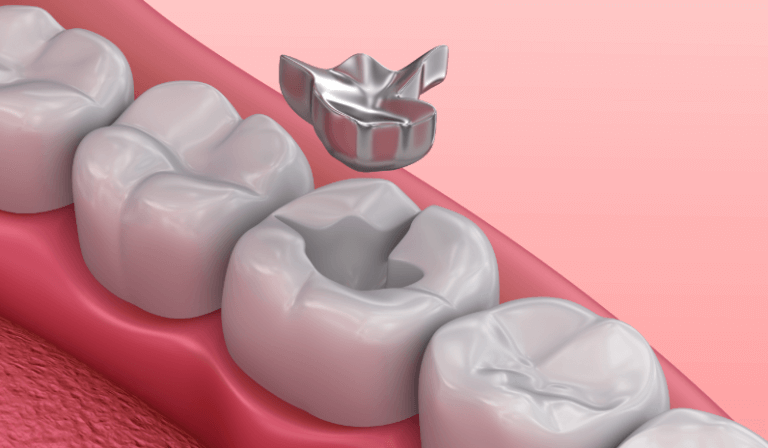
What Is An Amalgam Filling?
An Amalgam Filling is a dental restorative material used to repair teeth that have been compromised by dental caries, commonly known as cavities. This type of filling is made from a blend of metals, mainly silver, tin, copper, and mercury. Despite the term “silver filling,” amalgam actually has a silvery appearance, making it noticeable when used to repair teeth located at the front of the mouth. However, it is highly effective in restoring molars and premolars where its appearance is less conspicuous. Amalgam fillings have been used for over a century, providing a reliable and affordable solution for treating cavities.
Before deciding on whether An Amalgam Filling are right for you, there are some things you should know:
- Who Needs An Amalgam Filling?
- What Are The Advantages Of An Amalgam Filling?
- What Are The Alternative Treatments If I Do Not Choose An Amalgam Filling?
- How Much Does An Amalgam Filling Cost?
- What Are The Steps In The Amalgam Filling Procedure?
- Can I Have An Amalgam Filling If I Am Pregnant?
- How Long Does An Amalgam Filling Last?
- What Are Common Problems with An Amalgam Filling?
If you have any further questions about an Amalgam Filling or other dental services offered at Atlas Dental, please contact us.

Free phone consultation
Have questions about tooth fillings? Schedule a free phone consultation with our Toronto dentist.

5 star google reviews
Our patients love us! See for yourself why more and more people are choosing Atlas Dental for their dental fillings.

Book Emergency tooth filling
Do you think you have cavities and need an appointment? Book an emergency tooth filling online.
Who Needs An Amalgam Filling?
Amalgam fillings serve as an effective solution for a wide range of dental situations. Several factors determine whether an amalgam filling is the right choice for your dental needs:
- Large Cavities: When the cavity is substantial, an amalgam filling may be preferred over other types of fillings due to its ability to provide a sturdy and long-lasting restoration.
- Durability and Strength: Amalgam fillings are renowned for their durability and strength. These fillings can withstand the forces of chewing and grinding, making them particularly suitable for restoring teeth in the back of the mouth, where the pressure from chewing is greater.
- Cost-Effectiveness: Amalgam fillings are generally more affordable compared to other dental restorative materials, making them a practical choice for individuals seeking cost-effective dental treatments.
- Time Constraints: Amalgam fillings can be placed relatively quickly, which can be beneficial for patients with time constraints who require a prompt dental restoration.
- Preference for Metal Fillings: Some individuals may prefer the appearance and characteristics of metal fillings like amalgam, especially for restoring molars that are not immediately visible when smiling.
Some patients may have concerns about the presence of mercury in amalgam fillings, even though the amount used in dental amalgam is considered safe by regulatory bodies like the American Dental Association (ADA) and Canadian Dental Association (CDA). Ultimately, the decision to get an amalgam filling will depend on your dentist’s assessment of your oral health, the location and size of the cavity, and your individual preferences and needs. If you have further questions about Amalgam Fillings, please contact us.
What Are The Advantages Of An Amalgam Filling?
Amalgam fillings offer several advantages that have made them a popular choice for dental restorations over the years:
- Durability and Longevity: Amalgam fillings are exceptionally durable and can withstand the wear and tear of daily chewing and biting forces. When properly cared for and maintained through regular dental check-ups, they can last for a decade or more, providing reliable and long-lasting tooth restorations.
- Strength for Molars and Premolars: Since amalgam fillings are exceptionally sturdy, they are particularly well-suited for restoring molars and premolars at the back of the mouth. These teeth endure more force during chewing, and amalgam fillings can effectively withstand this pressure.
- Cost-Effective: One of the most significant advantages of amalgam fillings is their cost-effectiveness. Compared to other dental filling materials like composite resins or porcelain, amalgam fillings are generally more affordable, making them an accessible option for patients on a budget.
- Quick Placement: Amalgam fillings can be placed relatively quickly by dental professionals. The process involves minimal steps, allowing for efficient treatment and reducing the time spent in the dental chair.
- Versatility: Amalgam fillings can be used in various situations, from small to large cavities. Their versatility and adaptability make them a reliable choice for different tooth restorations.
- Less Sensitivity After Placement: Some patients experience less post-operative sensitivity with amalgam fillings compared to other materials. This can be a comforting factor for those who are concerned about discomfort after the filling procedure.
- Suitable for Children and Elderly Patients: Amalgam fillings are commonly used for children and elderly patients due to their ease of placement and cost-effectiveness. They are especially beneficial for young children who may not be able to sit through longer dental procedures.
- Proven Track Record: Amalgam fillings have been used in dentistry for over a century, and their reliability and effectiveness have stood the test of time. The extensive history of their use has demonstrated their safety and success as dental restorative materials.
Despite these advantages, it’s essential to consider individual factors and preferences when choosing a dental filling material. Some patients may prefer tooth-colored fillings for aesthetic reasons, especially for front teeth, while others may have specific health concerns regarding the mercury in amalgam fillings. If you have further questions about Amalgam Fillings, please contact us.
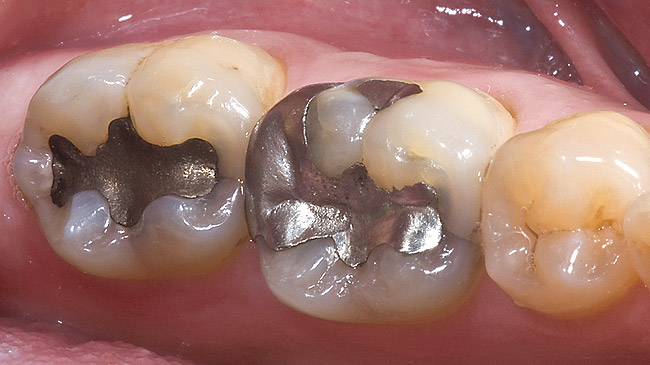
What Are The Alternative Treatments If I Do Not Choose An Amalgam Filling?
While amalgam fillings offer many benefits, some patients may prefer alternative dental restorations for various reasons:
- Composite Resin Filling: Composite resin fillings, also known as tooth-colored or white fillings, have become a sought-after alternative to amalgam. These fillings are made from a mixture of plastic and fine glass particles, resulting in a natural appearance that blends seamlessly with the tooth. The dentist matches the color of the composite resin to the natural shade of the patient’s teeth, making them an excellent choice for visible areas of the mouth. Composite resin fillings bond directly to the tooth structure, requiring less removal of healthy tooth material during the placement process. They are versatile and can be used for both small and moderate-sized cavities.
- Glass Ionomer Filling: Glass ionomer fillings are a type of dental filling material made from a combination of acrylic and glass powders. These fillings are often used for small cavities or as a temporary solution. Glass ionomer fillings release fluoride, which can help prevent further tooth decay in the treated tooth. They have a translucent appearance, making them less noticeable than amalgam fillings but not as aesthetically pleasing as composite resin fillings. Due to their lower durability, they may not be the best choice for teeth exposed to heavy biting forces.
- Porcelain Inlay: Porcelain inlays are custom-made restorations crafted from high-quality dental porcelain. They are ideal for larger cavities that may be too extensive for direct fillings. Porcelain inlays offer excellent strength, durability, and a natural appearance that closely resembles the original tooth. Dentists use advanced technology, such as CAD/CAM systems, to design and fabricate precise porcelain inlays, ensuring a comfortable fit and long-lasting restoration.
- Porcelain Onlay: Porcelain onlays, like inlays, are custom-made restorations that cover more extensive areas of the tooth’s surface. They are suitable for cases where the damage extends to the tooth cusps or biting surfaces. Porcelain onlays provide added strength and protection to the tooth while maintaining a natural appearance. They are a conservative alternative to dental crowns, preserving more of the healthy tooth structure.
- Dental Crown: A dental crown, also known as a cap, is a custom-made restoration that completely covers the entire visible portion of a damaged tooth. Dental crowns are used when a tooth has significant decay or damage, and other filling options may not be sufficient. Crowns can be made from various materials, including porcelain, metal, or a combination of both. They provide exceptional strength and protection for weakened teeth.
- Dental Veneer: Dental veneers are thin shells of porcelain or composite resin that are custom-made and bonded to the front surface of teeth to improve their appearance. They are an alternative to fillings for treating minor cosmetic issues, such as chipped or discolored teeth.
Choosing the right alternative dental filling material depends on factors such as the size and location of the cavity, aesthetic preferences, and budget considerations. Your dentist will thoroughly evaluate your oral health and discuss the pros and cons of each option to help you make an informed decision. If you have further questions about Amalgam Fillings, please contact us.
Cost of Amalgam Fillings
Whether it is an amalgam filling, composite resin filling, or glass ionomer filling, the cost of any of these Dental Fillings are similar and will depend on the location of the tooth (anterior, bicuspid or molar), as well as the size of the filling, which is translated as the number of “surfaces” involved. Imagine each tooth as a 5 surface box. Each “surface” that gets incorporated will dictate the size (and overall cost) of the tooth filling. Therefore, the cost of a filling can range between $200-460. The codes relevant to dental fillings in the Ontario Dental Association’s Suggested Fee Guide appear as follows:
Permanent Anteriors:
- 23111 – One surface: $200
- 23112 – Two surfaces: $250
- 23113 – Three surfaces: $300
- 23114 – Four surfaces: $370
- 23115 – Five surfaces (maximum surfaces per tooth): $390
Permanent Bicuspids:
- 23311 – One surface: $220
- 23312 – Two surfaces: $275
- 23313 – Three surfaces: $330
- 23314 – Four surfaces: $400
- 23315 – Five surfaces or maximum surfaces per tooth: $420
Permanent Molars:
- 23321 – One surface: $240
- 23322 – Two surfaces: $300
- 23323 – Three surfaces: $360
- 23324 – Four surfaces: $440
- 23325 – Five surfaces or maximum surfaces per tooth: $460
Dental Fillings are considered a basic service under all dental insurance plans and should be covered to your maximum insurable limit, but be sure to find out from your dental insurance plan provider how much you are eligible for before going ahead with dental treatment. Our fees are consistent with the ODA Fee Guide.
For patients without dental insurance, Atlas Dental is pleased to offer dental financing through Dentalcard. Affordable payment plans start at 7.95% for terms of 6 months to 6 years. To learn more about Dentalcard dental treatment financing, follow this link.
What Are The Steps In The Amalgam Filling Procedure?
The amalgam filling procedure is a common dental treatment performed by dentists to restore teeth affected by dental caries or cavities:
- Initial Examination and Diagnosis: The process begins with a thorough dental examination. Your dentist will visually inspect and use dental instruments to assess the affected tooth’s condition and determine the extent of the decay. Dental X-rays may also be taken to get a more detailed view of the cavity’s size and location. Please review these tooth filling pre-visit instructions before your appointment.
- Anesthesia Administration: Before the procedure begins, the dentist will administer a local anesthetic to numb the area around the affected tooth. Anesthesia ensures that you remain comfortable and pain-free during the treatment.
- Tooth Preparation: Once the tooth is numb, the dentist will remove the decayed portion of the tooth using a dental drill or other dental instruments. This process ensures that all the decayed material is removed, leaving behind healthy tooth structure.
- Amalgam Mixing: The dental amalgam is prepared by mixing the metal alloy (silver, tin, copper) with liquid mercury. The dentist carefully measures the appropriate amounts of each component to achieve the desired consistency and properties of the amalgam filling.
- Filling Placement: The mixed amalgam is then placed into the prepared cavity by the dentist. The dentist will condense and shape the amalgam to ensure it fits snugly within the cavity and contours to the natural shape of the tooth.
- Bite Adjustment: After placing the amalgam, the dentist will ask you to bite down on a special paper to check your bite. If necessary, adjustments may be made to ensure your teeth come together correctly when you bite.
- Final Polishing: Once the amalgam is set and your bite is properly aligned, the dentist will trim away any excess material and polish the filling. Polishing helps to achieve a smooth surface, reducing the risk of plaque accumulation and enhancing the filling’s appearance.
- Post-Treatment Instructions: Your dentist will provide you with dental filling post-treatment instructions, which may include advice on caring for the new filling, avoiding certain foods, and maintaining good oral hygiene.
The amalgam filling procedure is generally straightforward and can be completed in one dental visit, making it a convenient option for restoring damaged teeth. If you have further questions about Amalgam Fillings, please contact us.
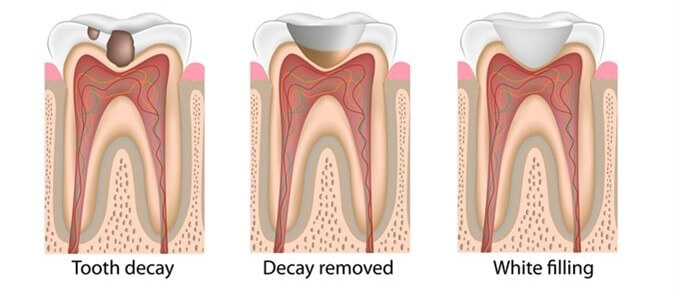
Can I Have An Amalgam Filling If I Am Pregnant?
Getting an amalgam filling during pregnancy is generally safe. Here’s what you need to know about getting an amalgam filling if you are pregnant:
- Safety of Dental Treatments During Pregnancy: Dental treatments, including amalgam fillings, are generally considered safe during pregnancy. However, it’s essential to follow certain precautions and communicate with your dentist and healthcare provider about your pregnancy status before undergoing any dental procedure.
- Mercury in Amalgam Fillings: Amalgam fillings contain mercury, a metal that has raised concerns among some individuals. The mercury in dental amalgam is in a stable form known as elemental mercury, which has been used in dentistry for decades. Numerous studies have shown that dental amalgam is safe and does not pose significant health risks to pregnant women or their developing babies.
- Dental Care During Pregnancy: Maintaining good oral hygiene and seeking regular dental check-ups during pregnancy is crucial. Hormonal changes during pregnancy can make gums more susceptible to inflammation and bleeding, leading to pregnancy gingivitis. Proper oral care can help prevent or manage these issues and ensure the overall health of both mother and baby.
- Dental Treatment Timing: If you require a dental filling, including an amalgam filling, during pregnancy, it is generally safe to have the procedure done at any stage of pregnancy. However, some dental treatments may be more comfortable during the second trimester when the risk of miscarriage is lower, and you are likely to be more comfortable sitting for an extended period.
- Minimizing Exposure to Mercury: If you have concerns about amalgam fillings, discuss them with your dentist and healthcare provider. Although dental amalgam has been shown to be safe, some pregnant individuals may prefer alternative dental materials like composite resin fillings or glass ionomer fillings. It’s essential to weigh the benefits and risks of different filling options and make an informed decision based on your unique situation.
- Safety Precautions During Treatment: When undergoing any dental procedure during pregnancy, the dental team will take additional precautions to ensure your safety and that of your baby. These may include using a rubber dam to isolate the tooth during the filling procedure, which helps prevent the ingestion of any dental materials. Additionally, good ventilation in the dental office further minimizes potential exposure.
- Radiation Exposure: Dental X-rays are usually avoided during pregnancy to minimize radiation exposure to the developing fetus. However, if deemed necessary for your dental treatment, your dentist will take precautions to shield your abdomen and use the lowest possible X-ray dosage.
If you have any concerns or questions about dental treatments while pregnant, it’s essential to discuss them with your dentist and prenatal healthcare provider. They will work together to provide you with the best dental care options that prioritize your oral health and overall well-being during this special time. If you have further questions about Amalgam Fillings, please contact us.
How Long Does An Amalgam Filling Last?
On average, an amalgam filling can last anywhere from 10 to 15 years or even longer with proper care. Amalgam fillings are known for their durability and can provide a reliable solution for tooth restoration. The longevity of an amalgam filling can vary depending on several factors:
- Oral Hygiene: Maintaining good oral hygiene is crucial in preserving the longevity of any dental filling. Regular brushing, flossing, and using an antibacterial mouthwash can help prevent the buildup of plaque and bacteria, reducing the risk of tooth decay and damage to the filling.
- Diet and Chewing Habits: Your diet plays a significant role in the health of your teeth and fillings. Consuming excessive sugary and acidic foods can increase the risk of tooth decay and weaken the filling’s structure. Additionally, avoiding hard or sticky foods can help prevent undue stress on the filling, especially if it is located in an area that experiences heavy biting forces.
- Grinding and Clenching (Bruxism): Individuals who grind or clench their teeth, a condition known as bruxism, may experience more wear and tear on their dental fillings. If you have bruxism, your dentist may recommend wearing a custom-made nightguard to protect your teeth and fillings while you sleep.
- Size and Location of the Filling: The size of the cavity being filled can influence the filling’s longevity. Larger fillings may have a shorter lifespan due to the potential for greater stress on the filling material. Additionally, fillings in high-pressure areas, such as molars, may experience more wear over time.
- Quality of the Filling Procedure: The skill and expertise of the dentist performing the filling procedure can impact its longevity. A well-placed amalgam filling, with proper contouring and polishing, is more likely to stand the test of time compared to a poorly executed one.
- Regular Dental Check-ups: Regular dental check-ups and cleanings are essential for monitoring the condition of your dental fillings and identifying any signs of wear, decay, or damage. Your dentist can detect and address potential issues early on, prolonging the life of your amalgam filling.
Overall, amalgam fillings are a durable and long-lasting option for restoring teeth affected by cavities. By taking proactive steps to care for your oral health and scheduling regular dental check-ups, you can maximize the lifespan of your amalgam filling and enjoy the benefits of a healthy, functional smile for years to come. If you have further questions about Amalgam Fillings, please contact us.
What Are Common Problems with An Amalgam Filling?
While amalgam fillings are generally reliable and durable, they are not without potential issues:
- Wear and Tear: Like all dental restorations, amalgam fillings can experience wear and tear over time, especially in areas of the mouth subjected to significant chewing forces. This wear may cause the filling to become uneven or rough, potentially leading to food accumulation and further decay.
- Cracks or Fractures: Amalgam fillings can develop cracks or fractures, especially in larger fillings or in patients who grind or clench their teeth (bruxism). Cracks in the filling can allow bacteria to penetrate the tooth, leading to decay underneath the filling.
- Leakage and Recurrent Decay: With time, the seal between the amalgam filling and the tooth may weaken, allowing bacteria and saliva to seep underneath the filling. This can lead to recurrent decay, where new cavities form around the edges of the filling.
- Tooth Sensitivity: In some cases, patients may experience tooth sensitivity after an amalgam filling procedure. This sensitivity is usually temporary and should subside after a few days. However, persistent or severe sensitivity may indicate a problem with the filling that requires dental attention.
- Cosmetic Concerns: Amalgam fillings are silver in color and may become more noticeable, especially if placed on visible front teeth. Some patients may be concerned about the appearance of amalgam fillings and opt for tooth-colored alternatives like composite resin fillings.
- Premature Filling Loss: In rare cases, an amalgam filling may prematurely dislodge or fall out due to improper bonding or inadequate tooth preparation. If this happens, it is essential to seek prompt dental attention to prevent further damage.
If you experience any issues or concerns related to your amalgam filling, it is essential to schedule an appointment with your dentist promptly. In some cases, your dentist may recommend replacing an old or damaged amalgam filling with a new restoration to ensure the continued integrity of the tooth and prevent potential complications. If you have further questions about Amalgam Fillings, please contact us.
We also think you’ll like…
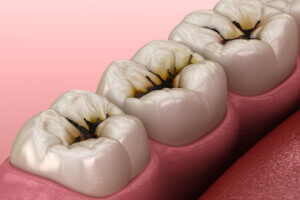
Cavity
Cavity What Is A Cavity? A Cavity, also known as dental caries, is a common dental problem that affects people of all ages. It is
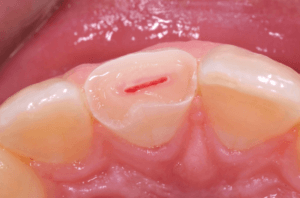
Dental Pulp Capping
Dental Pulp Capping What Is Dental Pulp Capping? When it comes to maintaining a healthy and vibrant smile, understanding the various aspects of dental care

Broken Tooth
Broken Tooth What Is A Broken Tooth? A Broken Tooth refers to a tooth that has been cracked, fractured or chipped. It can be caused
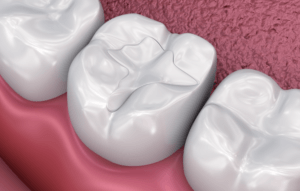
Glass Ionomer Filling
Glass Ionomer Filling What Is A Glass Ionomer Filling? A Glass Ionomer Filling is a dental restorative material that is used to repair cavities and
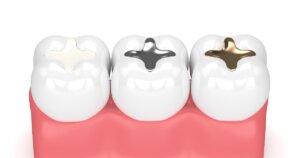
Dental Filling Post-Operative Instructions
Dental Filling Post-Operative Instructions What You Should Do After Your Dental Filling Appointment A tooth filling is the cosmetic dentist’s primary method of repairing teeth

Myogenic Trismus Home Care Instructions
Myogenic Trismus Home Care Instructions What Is Trismus? When your jaw muscles become so tight that you have difficulty opening your mouth wide, you may

